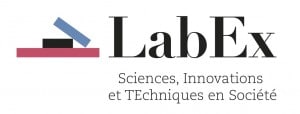Abstract
Background: With the widespread application of a robot to surgery, growing literature related to robotics in surgery (RS) documents widespread concerns from scientific researchers worldwide. Although such application is helpful to considerably improve the accuracy of surgery, we still lack the understanding of the multidiscipline-crossing status and topic distribution related to RS. Objective: The aim of this study was to detect the interdisciplinary nature and topic hotspots on RS by analyzing the current publication outputs related to RS. Methods: The authors collected publications related to RS in the last 21 years, indexed by the Web of Science Core Collection. Various bibliometric methods and tools were used, including literature distribution analysis at the country and institution level and interdisciplinary collaboration analysis in the different periods of time. Co-word analysis was performed based on the keywords with high frequency. The temporal visualization bar presented the evolution of topics over time. Results: A total of 7732 bibliographic records related to RS were identified. The United States plays a leading role in the publication output related to RS, followed by Italy and Germany. It should be noted that the Yonsei University in South Korea published the highest number of RS-related publications. Furthermore, the interdisciplinary collaboration is uneven; the number of disciplines involved in each paper dropped from the initial 1.60 to the current 1.31. Surgery; Engineering; Radiology, Nuclear Medicine, and Medical Imaging; and Neurosciences and Neurology are the 4 core disciplines in the field of RS, all of which have extensive cooperation with other disciplines. The distribution of topic hotspots is in imbalanced status, which can be categorized into 7 clusters. Moreover, 3 areas about the evolution of topic were identified, namely (1) the exploration of techniques that make RS implemented, (2) rapid development of robotic systems and related applications in surgery, and (3) application of a robot to excision of tissues or organs targeted at various specific diseases. Conclusions: This study provided important insights into the interdisciplinary nature related to RS, which indicates that the researchers with different disciplinary backgrounds should strengthen cooperation to publish a high-quality output. The research topic hotspots related to RS are relatively scattered, which has begun to turn to the application of RS targeted at specific diseases. Our study is helpful to provide a potential guide to the direction of the field of RS for future research in the field of RS.
See all documents refering Cortext Manager






